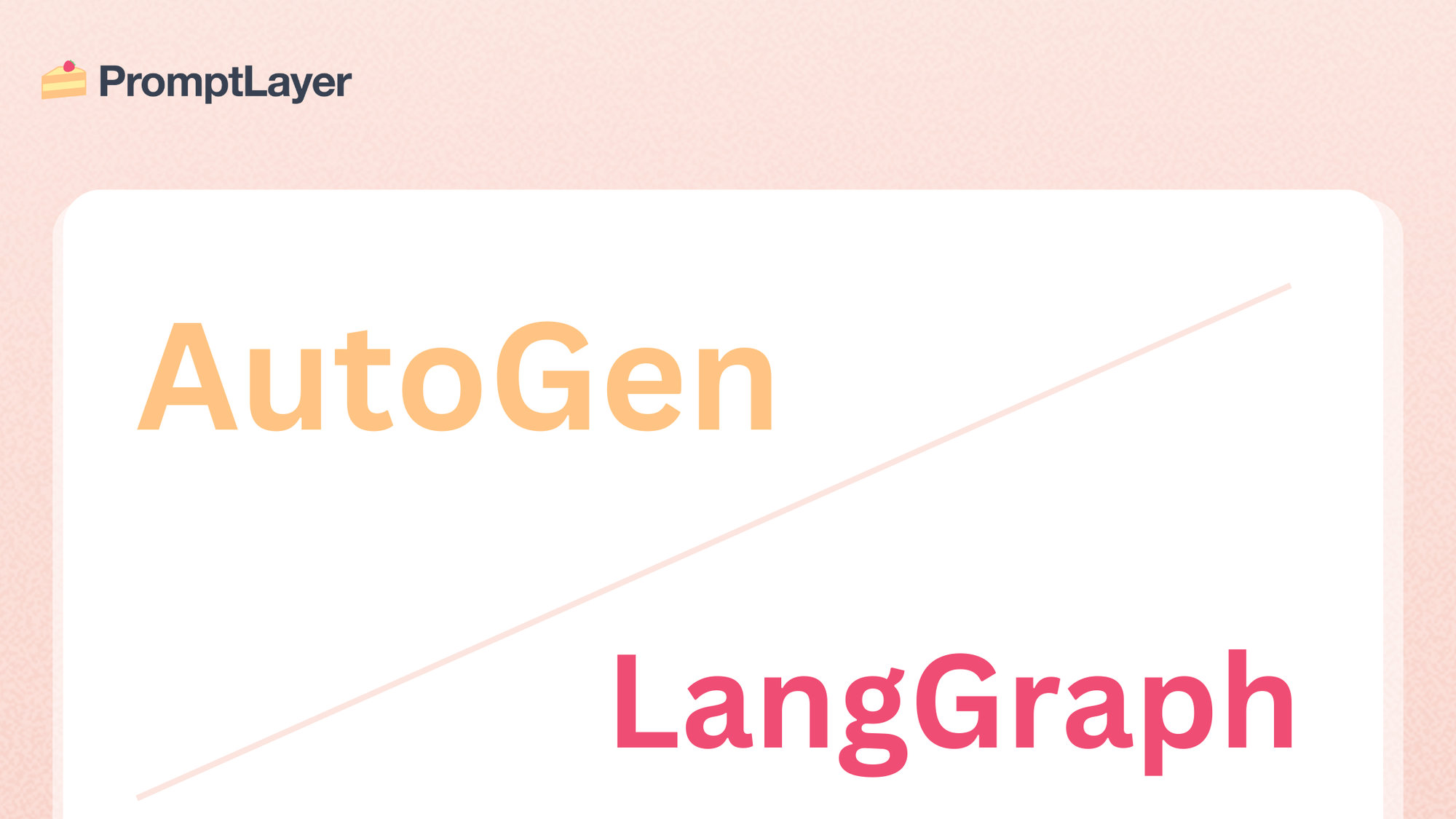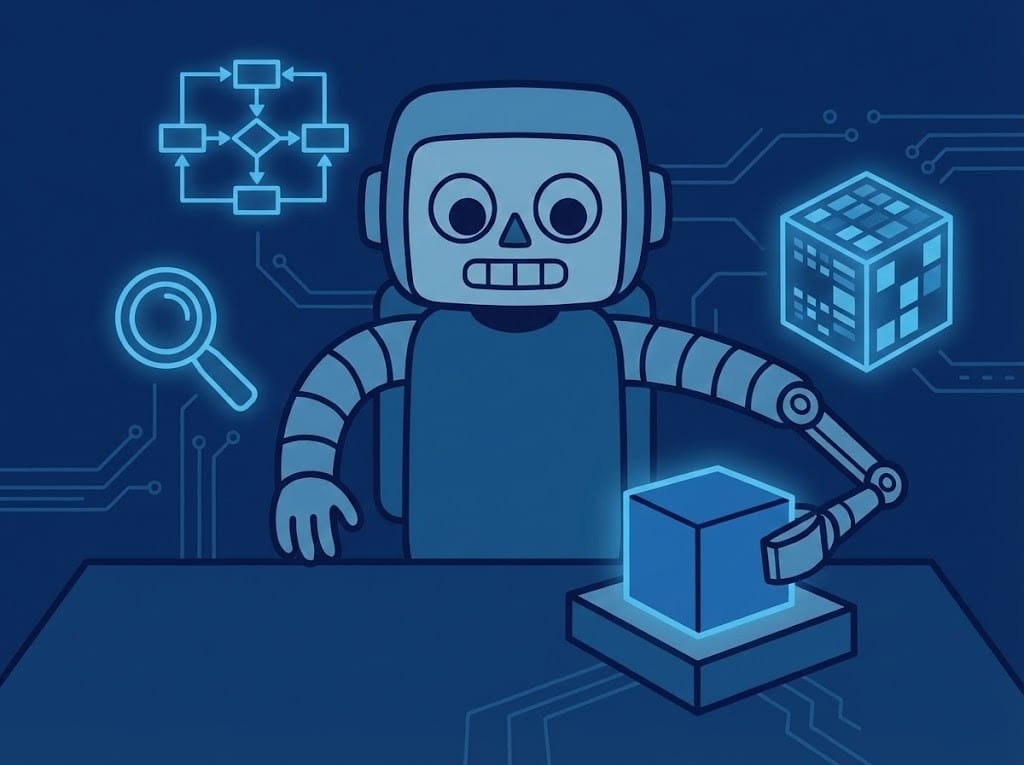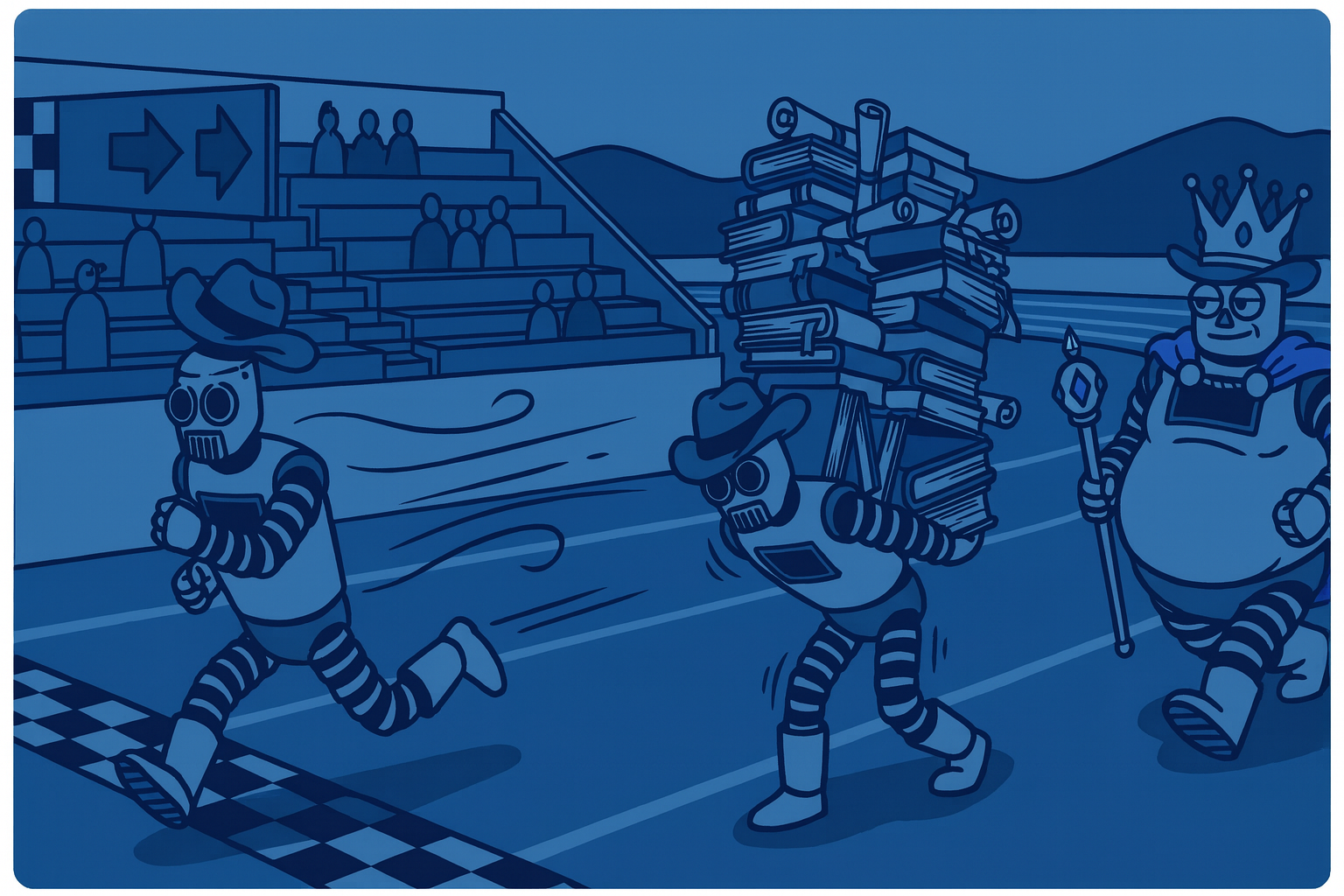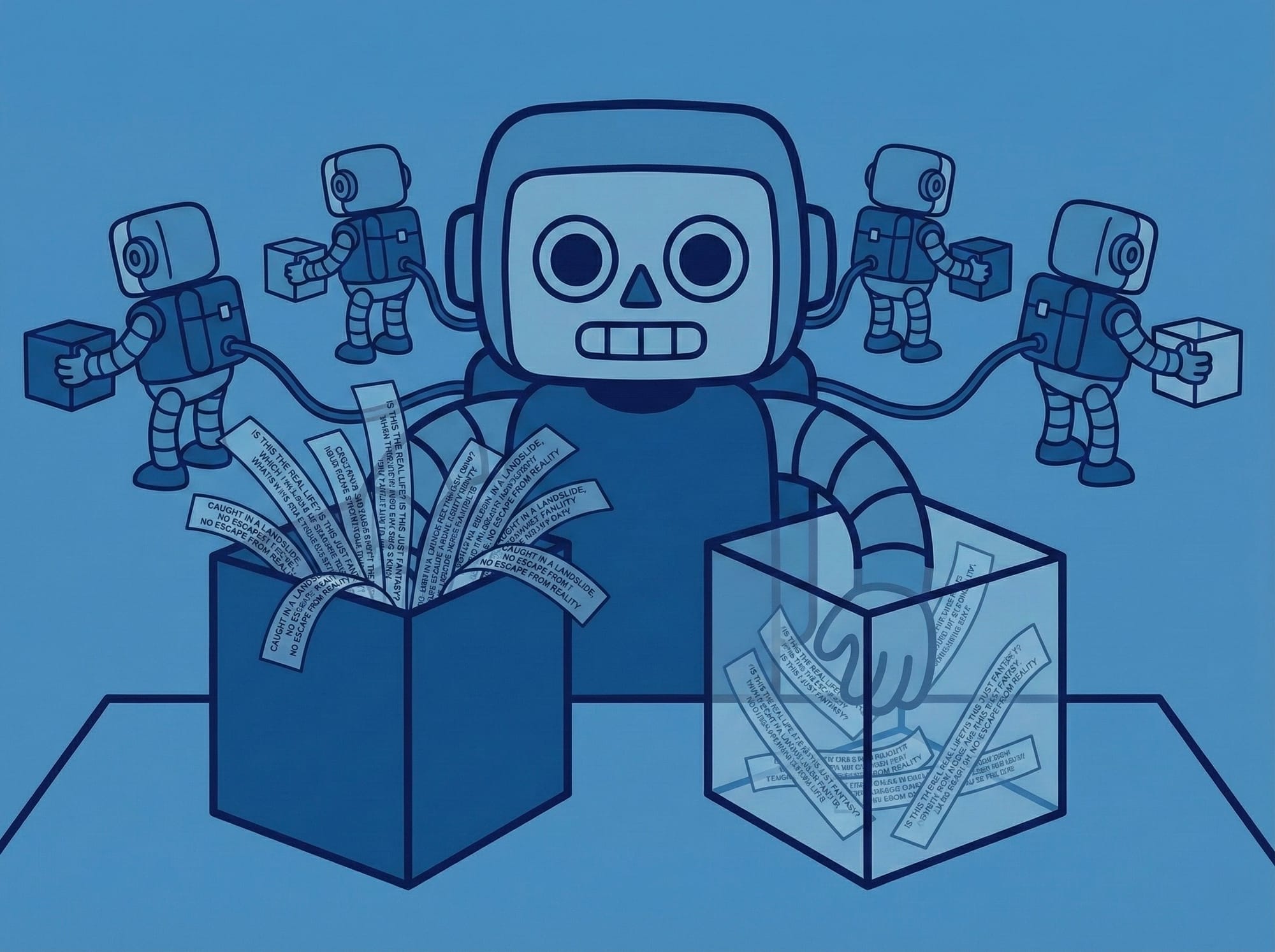LangGraph vs. AutoGen: A Comparative Overview

LangGraph and AutoGen are two prominent frameworks for developing AI agents, each catering to distinct needs in the realm of large language model (LLM) applications. Understanding their differences can help determine which aligns best with your project's requirements.
What is LangGraph?
LangGraph is an open-source framework built on top of LangChain, designed for orchestrating complex workflows using directed acyclic graphs (DAGs). It allows developers to define multi-agent systems where each agent performs specific tasks, and their interactions are managed through a graph structure. This approach provides clear visualization and control over the flow of data and decisions.
Key Features:
- Graph-Based Workflow: Utilizes DAGs to represent and manage agent interactions.
- Integration with LangChain: Leverages LangChain's capabilities for enhanced functionality.
- State Management: Supports dynamic state updates across agents, ensuring consistency.
- Tool Integration: Facilitates the incorporation of external tools and APIs into workflows.
- Visualization: Offers tools for visualizing agent interactions and workflows.
No Code, Maximum Control: Try PromptLayer
PromptLayer puts the power of advanced AI agent creation right at your fingertips.
With an intuitive drag-and-drop workflow builder, you can visually design, test, and deploy agents that connect multiple language models, integrate with any data source, and adapt to your unique business needs.
PromptLayer lets you orchestrate complex prompts, add conditional logic, run A/B tests, and manage everything with built-in version control—all in the cloud.
Whether you’re a business leader, subject matter expert, or just getting started with AI automation, PromptLayer’s no-code platform removes barriers and makes sophisticated agent development truly accessible.
What is AutoGen?
AutoGen, developed by Microsoft Research, is an open-source framework focused on building conversational AI applications through multi-agent systems. It enables the creation of agents that can converse with each other to accomplish tasks, integrating language models, external tools, and human feedback.
Key Features:
- Conversational Agent Framework: Models tasks as dialogues between agents.
- Event-Driven Architecture: Supports asynchronous agent interactions.
- Tool Integration: Allows agents to invoke external tools and APIs.
- Human-in-the-Loop: Incorporates human feedback into agent decision-making.
- No-Code Interface: Provides AutoGen Studio, a drag-and-drop interface for building and debugging workflows.
Comparison Table
| Feature | LangGraph | AutoGen |
|---|---|---|
| Architecture | Graph-based (DAGs) | Conversational (agent dialogues) |
| State Management | Dynamic, across agents | Per-agent memory |
| Tool Integration | High (via LangChain) | High (supports various tools and APIs) |
| User Interface | Code-based with visualization tools | No-code interface (AutoGen Studio) |
| Learning Curve | Steep (requires understanding of graphs) | Moderate (conversational design patterns) |
| Use Cases | Complex workflows, automation pipelines | Conversational agents, interactive systems |
Strengths and Weaknesses
LangGraph:
- Strengths:
- Provides precise control over agent interactions.
- Ideal for complex, multi-step workflows.
- Strong integration with LangChain enhances capabilities.
- Weaknesses:
- Steeper learning curve due to its graph-based approach.
- Requires familiarity with DAGs and state management.
AutoGen:
- Strengths:
- Facilitates rapid development of conversational agents.
- Supports asynchronous and event-driven interactions.
- Offers a user-friendly no-code interface for building workflows.
- Weaknesses:
- May not be as suitable for highly complex, non-conversational workflows.
- Limited visualization tools compared to LangGraph.
Detailed Comparison
Architecture and Workflow Modeling
- LangGraph (Graph-Based DAGs): Employs directed acyclic graphs where each node represents an agent task and edges define control flow. Supports loops, branching, and dynamic transitions, enabling workflows that adjust at runtime based on evolving state.
- AutoGen (Conversational, Event-Driven): Models tasks as dialogues between agents. Each agent listens for messages, processes them, and emits responses, creating asynchronous message flows. This conversational paradigm is well-suited for interactive applications but less intuitive for purely linear or conditional pipelines.
State Management
- LangGraph: Maintains a centralized, mutable
Stateobject that flows through all nodes. Agents update this global state, ensuring consistency and enabling complex conditional logic based on previous steps. - AutoGen: Utilizes per-agent memory caches. Each agent holds its local context and can share state either via messages or by writing to a shared datastore. While this approach provides modularity, it can require additional coordination logic for global state consistency.
Tool and API Integration
- LangGraph (via LangChain): Out-of-the-box integrations with over 50 data sources—cloud storage (AWS, GCP, Azure), databases (SQL/NoSQL), document processors (PyPDF, PDFMiner), search APIs (Google, Bing), vector databases (Milvus, Weaviate), and custom tools (WolframAlpha, iFixit).
- AutoGen: Native plugin system for LLM providers (OpenAI, Azure OpenAI, custom Hugging Face). Agents can call external APIs—e.g., CRMs, analytics services—through standardized interfaces. Integration with Azure services (AI Foundry, Cognitive Services) enhances its enterprise alignment.
User Interface and Ease of Use
- LangGraph: Provides a low-code visual studio for designing graphs, but primary usage often involves writing Python/JavaScript code to define nodes and edges. The visual components help in understanding flows but still require familiarity with DAG concepts.
- AutoGen: Offers both a code-first Python SDK and AutoGen Studio—a no-code, drag-and-drop environment. Non-technical users can assemble agent workflows visually, define message routes, and configure agent settings without writing code. Developers can switch to the SDK for deeper customization.
Learning Curve
- LangGraph: Steeper learning curve due to graph theory concepts, state management intricacies, and orchestration patterns. Developers must understand DAG semantics, state propagation, and error handling in graph contexts.
- AutoGen: More accessible for beginners owing to its conversational paradigm and AutoGen Studio. Defining agents as chat-like entities feels intuitive, and pre-built components reduce boilerplate. However, advanced use cases—such as custom memory modules or specialized tool integrations—require programming expertise.
Performance and Scalability
- LangGraph: Scales horizontally by distributing graph nodes across multiple worker instances (e.g., via Kubernetes). The centralized state can become a bottleneck if not sharded effectively, but recent updates to the LangGraph Platform introduce state partitioning and caching layers to mitigate this.
- AutoGen: Leverages Azure’s infrastructure for scaling agent instances dynamically. Agents spawn based on event triggers, and caching reduces redundant LLM calls, thereby lowering latency and costs. Empirical studies show AutoGen handling thousands of concurrent conversations with sub-second response times under typical loads.
Observability and Monitoring
- LangGraph: Integrates with OpenTelemetry for tracing agent executions, capturing metrics like token usage, latency per node, error rates, and cost per trace. Dashboards in the LangGraph Platform visualize execution timelines, state snapshots, and performance anomalies.
- AutoGen: Through Azure AI Foundry Observability, AutoGen offers end-to-end tracing—agent message flows, API call counts, conversation quality metrics (e.g., user satisfaction), and cost analytics. Built-in dashboards provide real-time insights into agent health, workload distribution, and anomaly detection.
Extensibility and Customization
- LangGraph: Developers can create custom node types by extending base classes, defining specialized
Stepfunctions, and integrating bespoke tools. The plugin architecture allows for community contributions—e.g., specialized connectors for domain-specific APIs or custom logging modules. - AutoGen: Offers an extensible plugin system where developers can register new LLM sources, tool wrappers, or message processors. Agents can be customized via subclassing—overriding methods for message handling, memory management, and tool execution. The open-source core encourages third-party modules (e.g., specialized question-answering agents, domain-specific knowledge agents).
Pricing and Licensing
- LangGraph: Open-source under MIT License. LangGraph Platform—a commercial service—charges based on compute usage, number of graph executions, and retention policies. Self-hosting is available only under enterprise plans, which include dedicated support and SLAs.
- AutoGen: Entirely open-source (MIT License). Hosting costs depend on chosen LLM providers (e.g., OpenAI API fees) and cloud infrastructure (e.g., Azure Instance costs). There is no proprietary platform fee, though enterprise-grade observability via Azure AI Foundry may incur additional Azure service charges.
Community and Support
- LangGraph: Backed by the LangChain community, which includes active forums, Discord channels, and GitHub contributions. Frequent community meetups, hackathons, and workshops foster collaboration. Documentation is extensive, with tutorials covering everything from basic graph construction to advanced deployment strategies.
- AutoGen: Supported by Microsoft Research and the broader Azure developer community. Detailed documentation and sample notebooks are available on the official GitHub. Microsoft’s developer forums and Stack Overflow tags facilitate troubleshooting. Recent Microsoft Build announcements underscore ongoing investment in the framework’s evolution.
Conclusion
Choosing between LangGraph and AutoGen depends on the specific needs of your AI project. If your focus is on building intricate, multi-agent workflows with precise control and visualization, LangGraph offers a robust solution. On the other hand, if you're aiming to develop conversational AI systems with ease of use and rapid prototyping, AutoGen provides a more accessible framework.
Consider your project's complexity, the importance of conversational elements, and your team's expertise when making a decision. Both frameworks are powerful in their own right and can significantly enhance the development of AI agents.
About PromptLayer
PromptLayer is a prompt management system that helps you iterate on prompts faster — further speeding up the development cycle! Use their prompt CMS to update a prompt, run evaluations, and deploy it to production in minutes. Check them out here. 🍰



